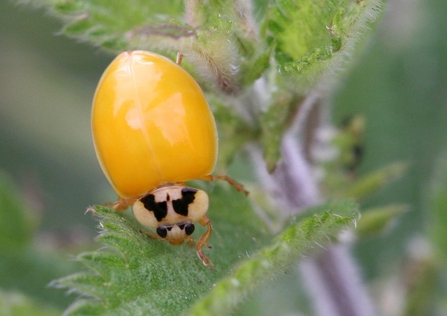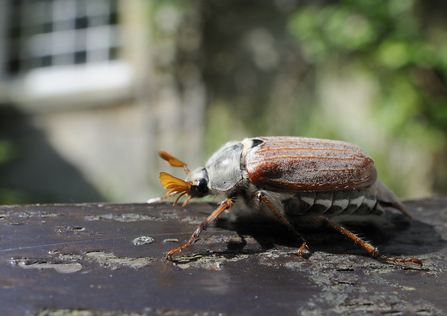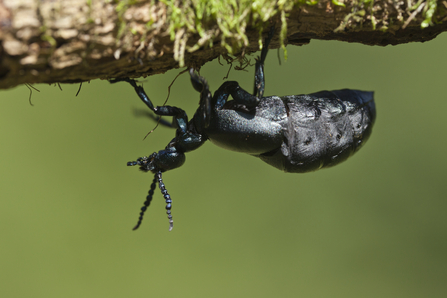One in five of all known species on Earth is a beetle – that’s over 400,000 different beetles in total. They range in size from the 16cm-long Amazonian titan beetle to the tiny feather-winged beetles, which measure 0.2mm and can comfortably sit on a pin-head! The ‘classic’ beetle has its front wings modified into hard, protective shields that cover the back and keep the more fragile flying wings safe when they’re folded away, although not all beetles are like this.
Over 4,000 species are known in the UK and they are a key part of our ecosystems, with both adults and larvae doing many different jobs. Like butterflies, they have a ‘complete metamorphosis’, in that the adult lays an egg which hatches into a larva (or grub). The grub eats to grow, shedding its skin several times before turning into a pupa, which hatches into the adult beetle.
When beetles first hatch, their hard wing-covers are soft, so they are vulnerable. It takes time for them to dry and harden. Once a beetle has hatched it does not grow any more, so there is no such thing as a ‘baby‘ beetle – just big and small species. You can spot a newly-hatched ladybird as they are a pale-yellow colour. As they dry, they harden and develop the familiar red with black spots.




